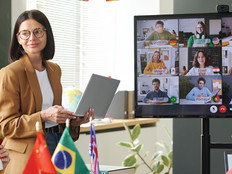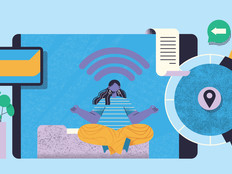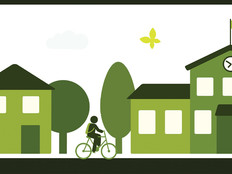Bridging the Gap: Live TelePresence Concert Connects Students and Art
Music and the arts have a knack for bringing people together. Some of history’s most memorable songs have played the role of peacemaker, uniting neighbors and friends — and entire societies — in times of change.
The words of Buffalo Springfield’s “For What It’s Worth” are intrinsically linked to images of the Vietnam War. You can’t fully cover the civil rights movement of the 1960s without mention of James Weldon Johnson’s enduring anthem, “Lift Every Voice and Sing” or Pete Seeger’s “We Shall Overcome.”
These days, it seems it isn’t the people who need saving, but the art. Faced with deep budget cuts that have forced schools to scale back or even eliminate dedicated arts and music programs, educators and other advocates have to find new ways to inject creativity and inspiration into the curriculum.
Fortunately, they’re getting a little help from their friends.
On May 22, Cisco Systems and the nonprofit Urban Entertainment Institute will host the third national Bridging the Gap concert. The nationwide event will use Cisco’s TelePresence video technology to connect students and educators with national recording artists and schools across the country.
Performing Schools
-Deer River High School, Deer River, Minn.
-Martin Luther King College Prep, Chicago
-Emerson Middle School, Los Angeles
American R&B singer Faith Evans will perform in front of students in Los Angeles. Singer/songwriter James Taylor, Latin sensation Gloria Estefan and pianist Michael Feinstein will take questions from the Library of Congress in Washington, D.C., and student performers from high schools in Chicago, Los Angeles and Minnesota will entertain attendees throughout the one-and-a-half-hour event.
In addition to bringing students and professional musicians together in support of art and music, the program will showcase Cisco’s TelePresence video technology, which lets participants from different locations interact in real time.
John Tuohy, education industry marketing manager at Cisco, says the technology provides an option for schools looking to save endangered programs.
“Instead of having an art teacher or a music teacher in every school, you can have a music teacher that serves a number of schools. It’s a way to bring your resources to scale.”
Is Telepresence an Affordable Option for Schools?
That’s a fair question. Fortunately, Tuohy says the investment doesn’t come at as steep a price as schools might think. Using the company’s Synch technology, schools can turn existing interactive whiteboards into “TelePresence endpoints.” Through Synch, schools receive a kit that includes a camera and codec for compressing the data.
Bandwidth is another potential sticking point. Cisco recommends a minimum network speed of 1 to 2 megabits per second for TelePresence. In the event schools don’t have enough bandwidth, or don’t want to host it on their native network, they can contact a Cisco-approved provider, such as AT&T, to provide the service and equipment for a fee.
Follow on Social Media
#BridgingGapsConcert
#telepresence
“These options really make the technology accessible,” Tuohy says.
And it’s not just for performances, he points out. Schools can also use TelePresence to bring in subject matter experts, authors and other special classrooms guests—wherever they are. Opportunities for insight and collaboration abound. “Music, arts, sports—a lot of those programs have been cut right down to bone. With this technology, the world really becomes the classroom,” Tuohy says.
Want to see Cisco’s TelePresence in action? Register now to watch a live feed of the Bridging the Gap concert, May 22 (6 p.m. PDT/9 p.m. EDT).








